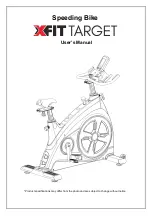
409-10042
DT-3000 Machines 1725100-[ ] and DT-5000 Machines 1725800-[ ]
Rev E
11 of 22
Tyco Electronics Corporation
2. Place the applicator on the quick–change base plate, then slide it back until the two notches in the
applicator base engage the stops at the back of the quick–change base plate. At the same time, guide
the ram post into the ram post adapter.
3. Slide the applicator base clamp UP and re–tighten the quick–release T–handle to secure the
applicator in place.
When using Applicator 567200-2 (originally intended for use with AMP-O-LECTRIC Model K" terminating machine),
loosen the quick-release T-handle, slide down the applicator base clamp, and remove the rear stop located on the left
side of the base plate. Install the rear stop (PN 354561-1), supplied with the air feed kit (optional accessory), at the
alternate mounting position on the base plate. See Figure 5.
4. Set the crimp height and insulation crimp discs so that the letters and numbers on the applicator pad
align with the front pad on the ram post adapter.
5. If the applicator is an air–feed type, connect the airlines to the valves located on the back of the
machine.
Quick Disconnect Coupling 23238-1 is required to run air-feed applicators.
6. Adjust the reel support for side–feed or end–feed product, depending on the applicator being used.
7. Mount the terminal strip guide on the left sheet metal guard for side–feed product, or on the right
sheet metal guard for end–feed product, depending on the applicator being used.
8. Mount the terminal reel on the reel support. Thread the terminal strip through the guard and into the
applicator according to the instruction sheet included with the applicator. If necessary, adjust the
lubricator bowl.
9. Align the product reel to the applicator by adjusting the reel flanges.
4.3. Setup
Install a miniature applicator and terminals according to Paragraph 4.2.
1. Turn on the main power using the switch located on the back of the machine.
2. Jog the machine (as described in Paragraph 4.4, B) through a complete crimp cycle.
Machine should be able to jog through the terminal and wire at maximum jog speed to determine crimp capacity.
3. Inspect the crimped terminal to verify that the terminal is being positioned properly within the
applicator.
4. Correct for any positioning errors according to the applicator instruction sheet, and repeat Steps 2
and 3 until a terminal is properly positioned.
5. Place a prepared wire in the crimp area and press the foot switch.
6. Inspect the completed crimp and make adjustments as necessary.
4.4. Mode Selection and Operation
The two basic modes of operation for these machines are: Full–Cycle and Jog.
A. Full-Cycle Mode
Depressing the footswitch causes the crankshaft to be rotated (at a speed defined by the speed control
knob), through a complete revolution. This completes one full machine cycle.
B. Jog Mode
(Figure 9)
Pressing the Jog button causes the crankshaft to be rotated at a default–reduced speed in the forward
direction until the Jog button is released or the crankshaft completes the cycle. If the Jog button is
NOTE
i
NOTE
i
NOTE
i








































